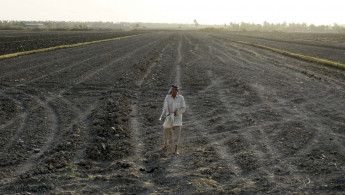Cultivated areas halve in Iraq as drought tightens grip
Areas under cultivation in Iraq have halved this summer compared to last year due to a drought that has led to a ban on water intensive crops, the government said.
"If we take the cultivated area for 2018, it is down 50 percent compared to 2017", Deputy Agriculture Minister Mahdi al-Qaisi told AFP.
In an unprecedented move, the government in June suspended farming of rice, corn and other cereals that require major irrigation.
Losses for families long dependent on rice production will reach $39 million this year, according to the authorities.
The staple usually yields 100,000 tonnes per year.
The drought has also hit livestock, with herds in southern Iraq dwindling by 30 percent, as cattle die of thirst or are sold for meat in greater volumes than usual.
In the southern province of Zi Qar, more than 400 farming families have left their villages to settle or roam in better irrigated areas, according to local officials.
While Iraq is often known as the "land of two rivers" - the Euphrates and Tigris cross its territory - the country's water resources have diminished in recent years.
Reservoirs are at around 10 percent of their capacity.
Beyond this year's dramatic lack of rain, experts say a central reason for Iraq's drought is the regional sharing of water resources.
Neighbouring Turkey and Iran have in recent years both rerouted cross-border water sources they share with Iraq.





 Follow the Middle East's top stories in English at The New Arab on Google News
Follow the Middle East's top stories in English at The New Arab on Google News
![Israeli forces ordered bombed Gaza's Jabalia, ordering residents to leave [Getty]](/sites/default/files/styles/image_330x185/public/2176418030.jpeg?h=a5f2f23a&itok=_YGZaP1z)

